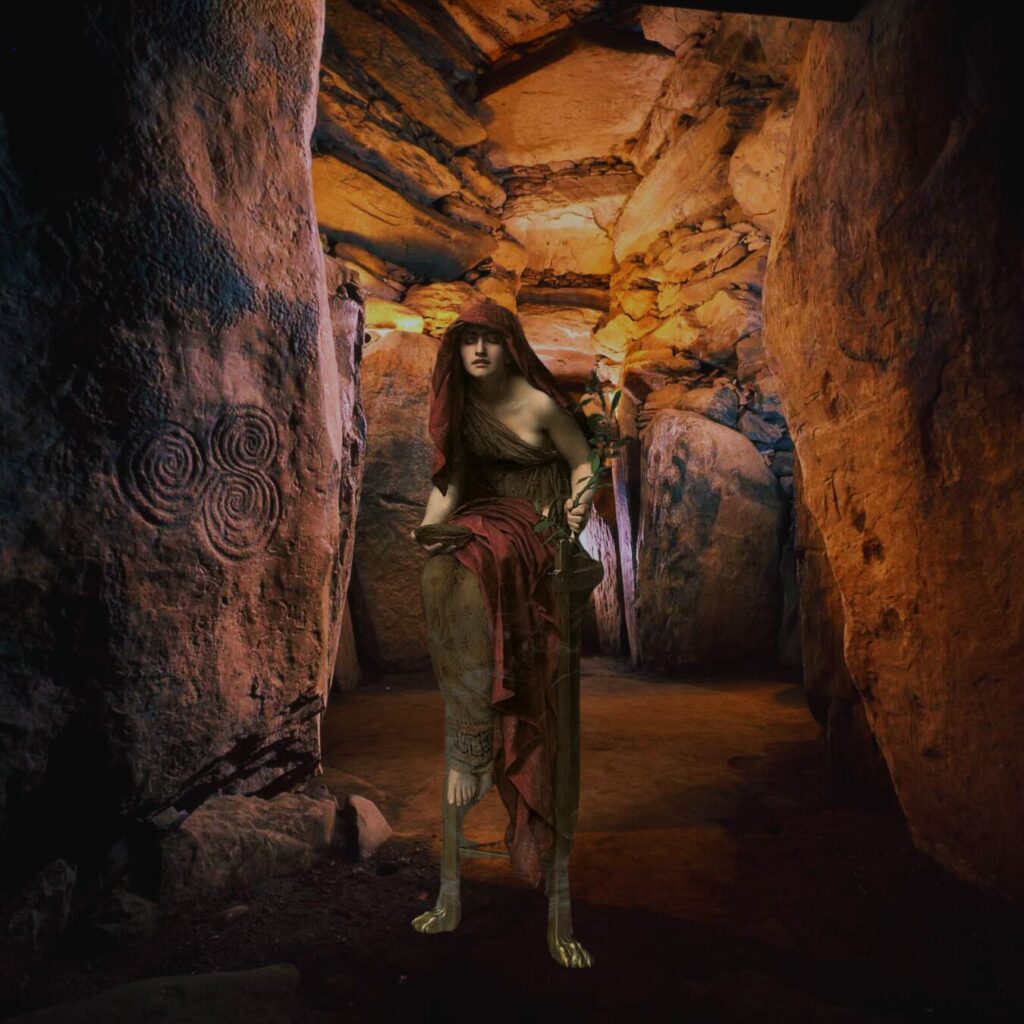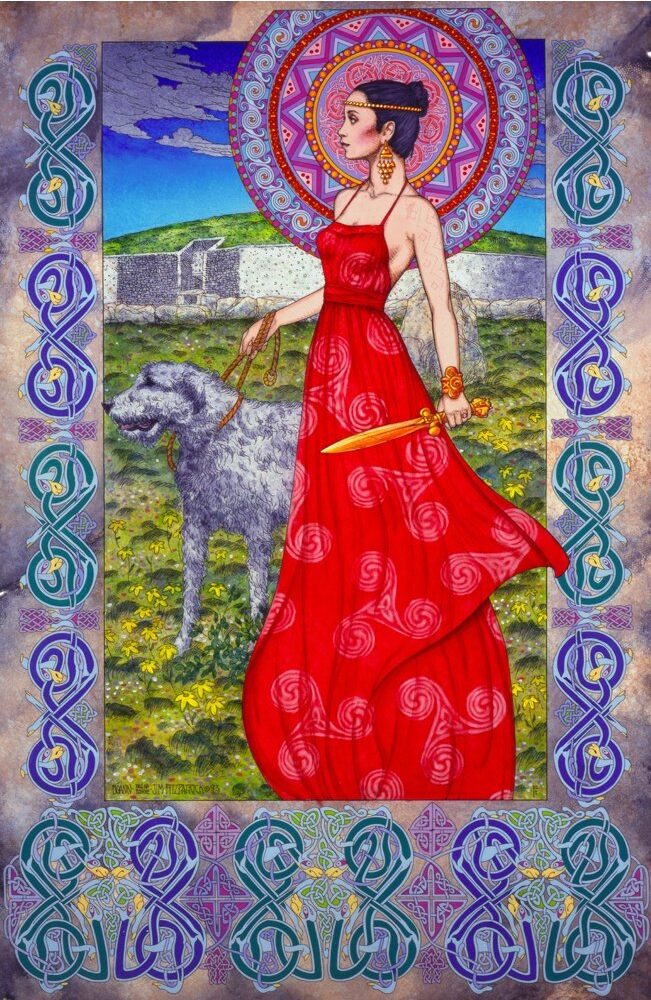by Laura K. Secor

Solstice Blessings!
The winter solstice is almost upon us in the northern hemisphere. The Gaeilge for the winter solstice is grianstad an gheimhridh, which translates as ‘winter sun stop’. This reflects the potency of this time to take a personal, collective and cosmic solar pause no matter where in the world you are; north or south.
We’ve reached the pinnacle of Samhain, the darkest night of the year is coming. We’ve ruptured as death has enveloped the land and for some of us, our internal landscapes.
As we transition now into the dreamtime, the winter solstice appeals to us to ask:
What holy longing calls to me?
What is dreaming through me?
Dreaming in the Tomb Womb
The site most associated with this time of year in Ireland is Newgrange in Brú na Bóinne, Co. Meath. Built c.5,000 years ago, this passage grave and ritual complex is hundreds of years older than the pyramids at Giza and Stonehenge. It was hidden for 4,000 years buried under a mound of earth.
What’s phenomenal about Newgrange is that it is aligned to the winter solstice. So that for a few days either side of the shortest day and longest night of the year, a ray of light from the rising sun enters through the roofbox and flows into the 19-metre passageway until it reaches the back of the body-shaped cruciform chamber. There, it softly illuminates a white carved basin stone and the famous orthostat with the triple spiral.
The lightshow lasts 17 minutes.
The solstice marks the seasonal turning point from the death of winter and the natural world, to a return to life with the promise of longer days.
In Newgrange, the masculine sun enters the vulva of the goddess penetrating the birth canal with light until it reaches her womb. There, the dreaming remains of our ancestors would have been regenerated with the life of the sun. The goddess’s tomb womb an intermediary between life and death.
“For the rest of the year the interior of the temple was in darkness. The ritual enacted must have been one of the sun fertilizing the ‘body’ of the earth and so awakening her after her winter sleep to the renewed cycle of life.” -Anne Baring & Jules Cashford

Bóinn by Jim Fitzpatrick
Irish astronomer and journalist Anthony Murphy of Mythical Ireland points out how Newgrange’s land, Brú na Bóinne in Gaeilge, is most often interpreted as Brú (“Brew”) meaning ‘palace’ or ‘mansion’, but it can also mean ‘belly’ or ‘womb’ in Old Irish.
Bóinne (“Boy-nyah”) derives from the River Boyne whose banks Newgrange rests into. The river is named after the Goddess Bóinn (“Bow-in”). The river is the goddess.
Bóinn’s name means ‘White Cow’, Bó Fhionn. So in this way, Newgrange could mean the ‘Womb of the White Cow’.
Indeed, Bóinn’s lover the Dagda (“Dawg-da”), the father figure of Ireland’s supernatural race, the Tuatha Dé Danann, and their son, the love god, Óengus (“Aengus”) are said to reside there.
And so, hear the voice of Goddess Bóinn ask you now:
What holy longing calls to you?
What is dreaming through you?
